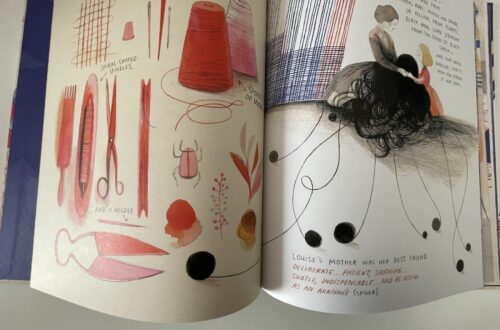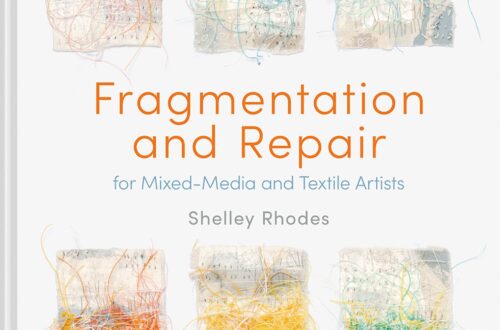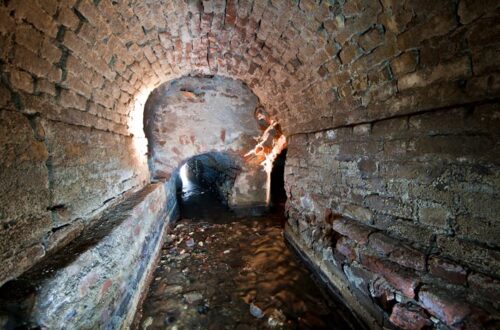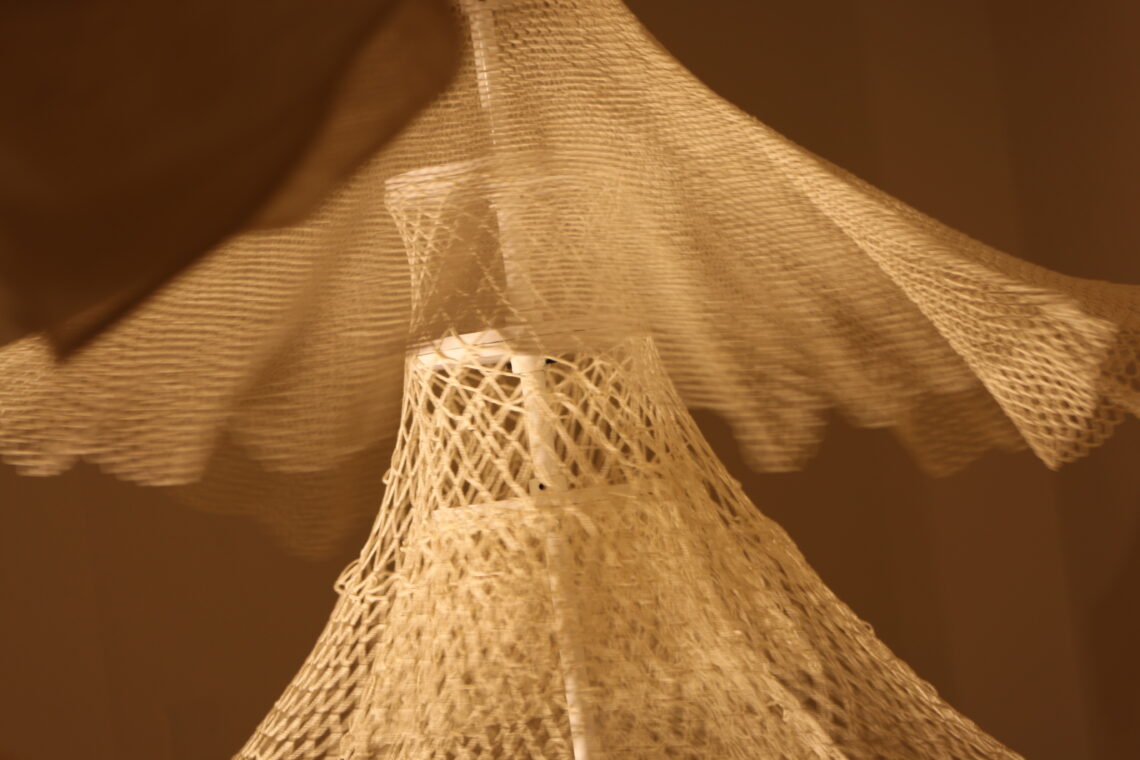
SPINNING DOLLS BY LILIANE LIJN AT THE HEMP MUSEUM
At the Museo della Canapa (Hemp Museum) in Sant’Anatolia di Narco (Perugia), Italy, visitors can admire the permanent installation Spinning Dolls by Liliane Lijn. The artist created this work inspired by the activities of this small yet highly dynamic museum, which not only preserves the historical memory of the entire production cycle—from cultivation to processing and the various uses of hemp over the centuries—but is also actively engaged in research and the promotion of its contemporary applications across different fields.
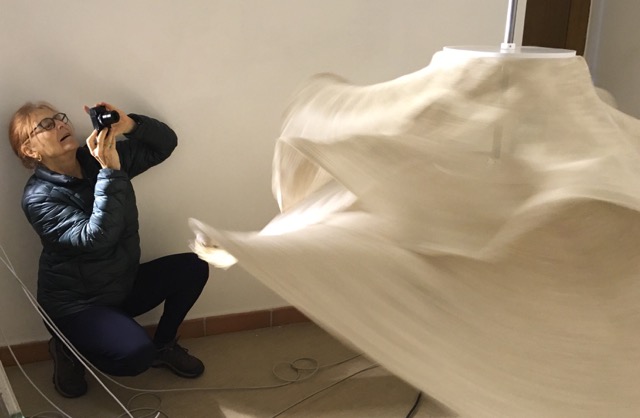
Added to the museum’s permanent collection in 2016, the artwork is the result of a collaborative artisanal effort: the crocheted elements were crafted in the museum’s weaving workshop, while the fabrics were produced by the inmates of the Spoleto Prison.
Spinning Dolls is a title that plays on the multiple meanings of the word spinning in English: it refers both to spinning yarn, linking the work to its setting, and to rotating on oneself, as well as to spinning tales, or inventing stories. The artwork transforms the feminine archetype into a metaphor with multiple layers of meaning, creating a richness of perspectives in which reflection is always in progress—always in motion. Movement and the conical form are recurring themes in the artist’s research and artistic journey.
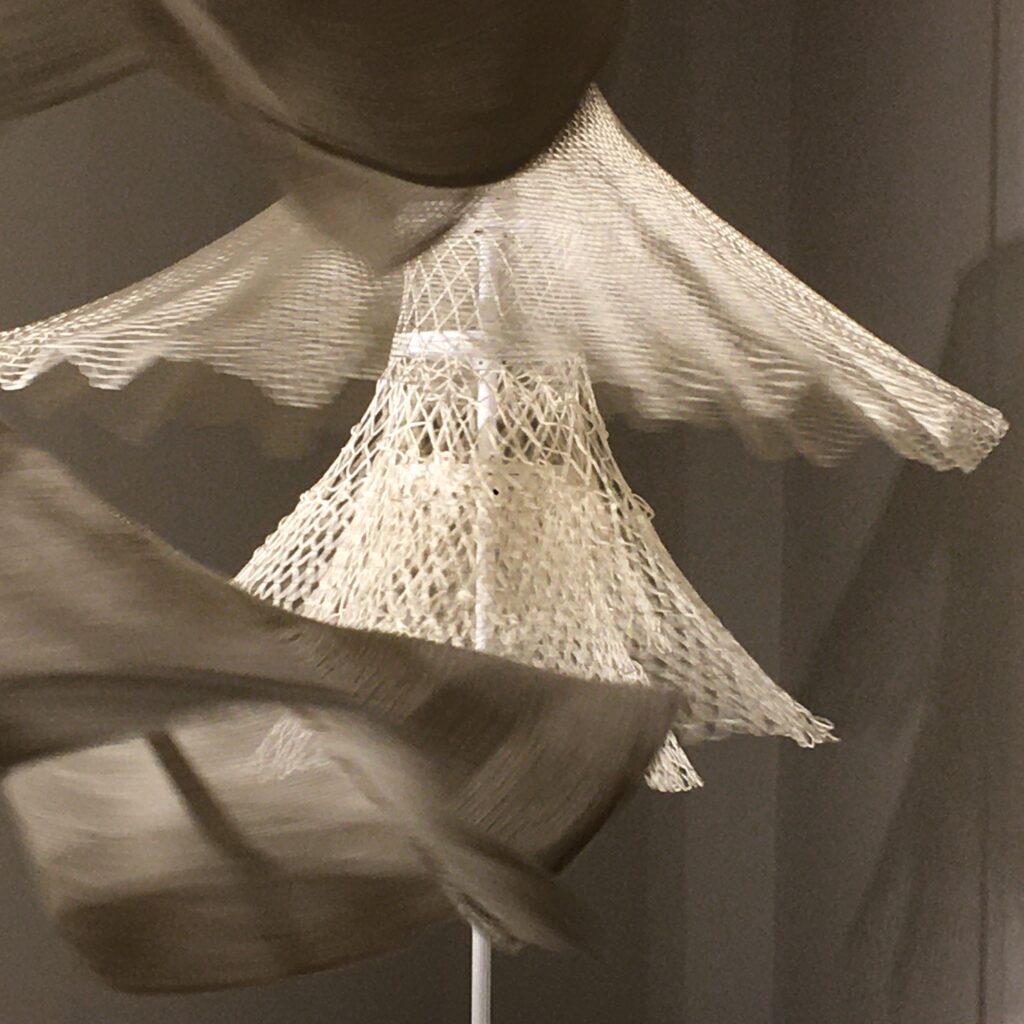
In this piece, centrifugal force generated by rotation rhythmically lifts the fabrics, transforming the Spinning Dolls into whirling dervish garments, freed from the body, surrendered to the dizzying flow of dance. At the same time, they evoke spinning spindles, the Fates weaving the threads of human destiny, and the spiral of galaxies. As the rotation gradually accelerates, the fabrics billow in waves; upon reaching maximum speed, they rise into the air, taking on shapes defined by the viewer’s imagination.
Liliane Lijn was born in New York and lives in London. Her work spans multiple fields, from the interaction of light with different materials to an exploration of femininity, employing a variety of media including kinetic sculpture, film, performance, and collage.

Her research draws inspiration from both nature and culture—poetry, mythology, science, and technology. She has long been fascinated by language development and interdisciplinarity, creating interactive art that actively invites the viewer’s participation.
Since the 1960s, she has exhibited internationally, and her works are part of numerous collections, including the Tate Gallery, the British Museum, the Victoria & Albert Museum in London, and the FNAC in Paris. In 2005, she was an artist-in-residence at the Space Sciences Laboratory, a program supported by ACE/NASA at the University of California, Berkeley. In 2013, Lijn was among the six artists selected to create a sculpture for the Fourth Plinth in Trafalgar Square, London.



